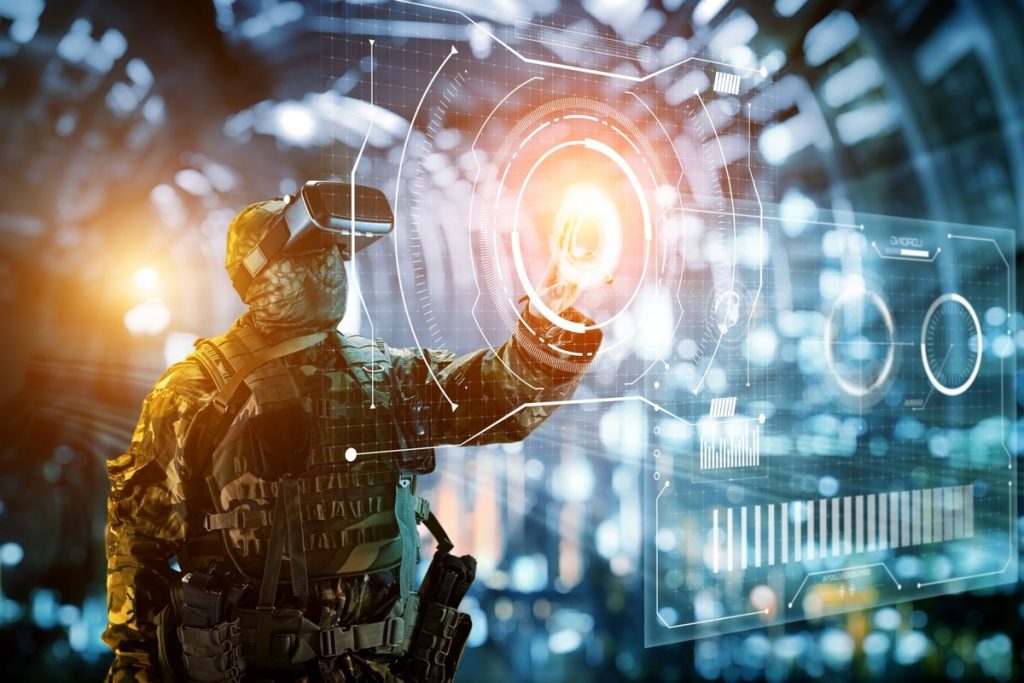Artificial Intelligence is the buzzword of the technological world of today. Much research is being conducted on this throughout the world. This technology is finding it’s use in almost all fields of Human endeavour. Robotic surgeries are now becoming the norm. Similarly, the financial world is using Artificial Intelligence to crunch data and predict the future of the markets and companies. Artificial Intelligence can be very effectively used in Military Operations. Research on the Internet of Military/ Battlefield Things (IOMT/ IOBT) is being conducted by the Americans, Chinese, Russians and the Israelis. Three military applications which can be used in the context of India is discussed here.
What is Artificial Intelligence (AI)
At the outset let us examine what is Artificial Intelligence and what are its capabilities. How is it applicable in the military context.
Artificial Intelligence or AI is defined as the intelligence demonstrated by machines, in contrast to the natural intelligence demonstrated by Humans.
It can be divided into two separate ideas or fields.
- Artificial Narrow Intelligence (ANI)
- Artificial General Intelligence (AGI)
ANI: This can be defined as the field of study of any device that perceives its environment and takes action that maximises its chances of achieving its goals.
AGI: This in addition to the above definition also has the capability to mimic the “Cognitive” functions that human brain is associated with; such as learning, problem solving, reasoning, decision making etc. In fact, it uses these cognitive functions for its response to stimuli.
The ANI is where all progress on AI has taken place and hence this article is restricted to those applications only. The AGI is the branch of AI which we see mostly in Sci-Fi movies as in actuality there is very little progress on this subject as on today
Military Applications
AI has immense potential as far as the military application is concerned. Much research is being conducted in AI as part of developing and integrating systems on the Internet of Battlefield/ Military things (IOBT/ IOMT). These projects are big projects and still under research and development. I would prefer smaller projects developed piecemeal, but with same algorithms and architecture and then integrated at a later stage onto bigger systems.
There are three small projects which in my perception can be used to develop smarter and faster weapon systems with a smaller response time and lesser manpower. These are described below; the description is in very layman terms and the technical feasibility of these concepts will require a much more detailed study.
This is not an exhaustive list of what AI can do. AI can be used in other systems also; especially in detection of hostiles in CI operations, detection of hostile ships along the sea coast etc.
Artillery Fire Direction and Control
Artillery has been the deciding factor on the outcome of any battle since its inception into the battlefield. The 1999 Kargil Conflict confirmed its effectiveness in modern warfare. AI can be used to make Artillery Weapon Systems more devastating by increasing the capability, accuracy and effectiveness of Artillery Firepower.
For the uninitiated; a simplistic description of how Artillery guns are fired is enumerated below.
- The Artillery Observation Post (OP) Officer identifies the target works out the details like; coordinates description and extent.
- The OP passes this data to the Command Post at the Gun Position manned by the Gun Position Officer (GPO). The GPO and his technical staff workout the data to be fed to the guns in terms of bearing and range.
- This data is then passed to the guns, where the gunners lay the guns accordingly.
- On orders from OP the GPO fires the guns.
AI can be used to fully automate the above methodology. A brief description of how this can be achieved is given below.
- Use various surveillance devices like UAVs, Satellites, Air Photos, Human Intelligence and OP to collect target data and send it to the Gun Control System (GCS).
- The GCS works out this data into firing coordinates for the Guns and feeds it to the Guns.
- The Guns silently register the targets and lays itself on these targets.
- This data is then sent out to the surveillance devices to check the accuracy and the Guns receive the feedback.
- The Time on Target (TOT) or on call fire can be fed for fire orders and guns are in a ready mode on multiple target data.
- At the appropriate time the Guns open up and receive real time data on the effectiveness. The time to switch from one target to other reduces as the data is already fed to the guns.
- The Guns also receive continuous data of advancing friendly troops and can automatically lift fire when friendly troops cross the safe zone.
At an advanced stage; as and when adequate data is collected the guns can be intelligent enough to identify and switch fire/ Lift fire on its own based on the movement of troops without any human interface.
However, in the present circumstances gunners and GPO will be required to man the guns but AI will give the following advantages
- Faster Response Time
- Greater accuracy and dispose of the need for ranging Fire
- Greater Accuracy
- Greater surprise element
- Achieve better coordination of fire power
- Achieve optimum quantum of firepower on targets saving ammunition
Air Defence System
AI can be used to create a more effective Air Defence System; incorporating Air Defence (AD) Guns, Fighter aircrafts, AD Missiles etc. The requirement is to create an exhaustive data base of hostile air attack systems; namely the aircrafts and missiles
The data set will have to cover acoustic signatures, make and type of attacking weapon system, photos of the system, Identification signs/ marks on the attacking object etc. The more the data, the more accurate will be the detection and response.
This data can be collected using satellites, UAVs, Surveillance AC, and Human Intelligence etc. It is important to note that more the data more will be the accuracy and effectiveness of the system.
A brief description of how Air Defence can use AI is given below.
- The identification data of hostile weapon systems is fed into the data base of the AD weapon systems and the aircrafts.
- The Surveillance devices detect the activity at the enemy location and issues early warning to a central controlling authority.
- The Central Control reviews data and location and then activates appropriate defensive weapon system (Aircraft or AD Guns)
- These systems get into preliminary mode of taking defensive action, identify the enemy and get into firing mode automatically
- On orders from central control the appropriate weapon system takes action. Central control monitors situation real-time based on data received and engages the weapons as and when required.
- Friendly Aircrafts flying in the zone have some kind of identification signature (RFID can be one) which is fed to the Guns and once detected by them the gun does not fire or directs itself away from the aircraft
- The central control orders action to cease on elimination of the threat.
The system is at present being manually followed but real-time data is hard to come by and actions are taken in silos. The introduction of AI into this system will give it the following advantages
- Faster and real-time response time
- More effective use of resources
- Better coordination
- Optimum quantum of fire resulting in saving ammunition
- Lesser damage from friendly fire
Coordinated Remotely Controlled Fire using Small Arms
This concept involves using AI to bring about a coordinated fire using small arm automatic weapons like Machine Guns.
This requires that some kind of smart system be developed which can automatically discern enemy threat and bring out a coordinated fire assault on the attacking enemy, while the system is remotely controlled
The system is conceptualised in the steps given below
- There needs to be Central Control which will receive data and send the response. Presently the cognitive analysis will have to be done by Human interface. This Central Control will receive the data, analyse the threat and decide on the optimum response, the timing of response.
- Develop a smart tripod stand using system of gyrometers, accelerometers and actuators which can be remotely controlled in a manner that the weapon system fitted onto it can move at least 180 degrees. The target data can fed into the tripod system, so as that it can direct or aim the weapon onto the target on orders from a central control
- The weapon fitted onto it also needs to be made smart in terms of detection of targets and can pass the target data and image to a central control which gives firing orders in real-time. It also requires a smart firing mechanism which can be activated remotely and with zero delay
- A system of data acquisition and transmission to the central control in real-time will also be required by this system. The control will then discern the gravity of the threat and the adequate response to the threat.
The advantage this system offers is as under:
- Saves on Manpower. Number of weapons can be deployed without being manned and remotely controlled
- With adequate sensors, the element of surprise is denied to the attacker
- The weapon system can be deployed ahead of the main position or in the flanks
- Response time is faster and will give troops in the defensive position time to be ready
However, there is much work required to be done on this concept, in actuality this project will probably have to begin from scratch.
Conclusion
The article is based solely on my perception and knowledge of AI and the weapon systems. Much work needs to be done to actually implement these concepts. Also as on date the concept and application of AI is seeing extensive research and development. All this development is happening at the Strategic Level and how to manage the battlefield at the theatre level. The concepts which are promulgated in this article are tactical in nature and can be tried out as pilot projects, however, ensuring that the algorithms used in all the systems are same/similar so that they can be integrated seamlessly at the Strategic Level.







